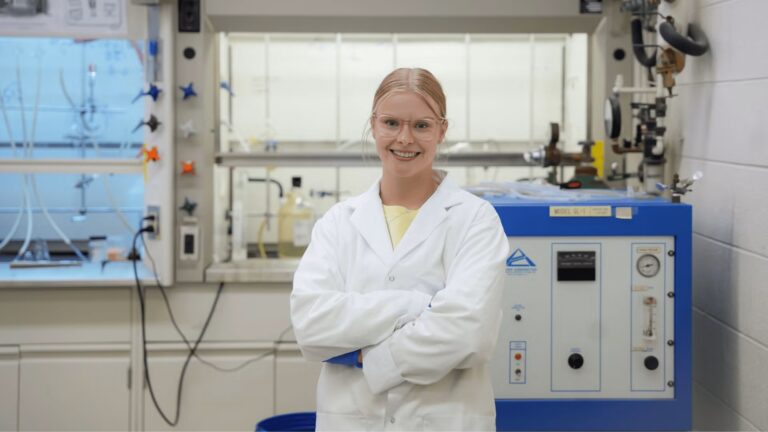Since the early days of the COVID-19 pandemic, individual swab-testing has been adopted globally as the gold-standard for acquiring information regarding positive cases, rates of infection, and acute outbreaks. While this method is valuable for acquiring personalized data for contact tracing, it is limited by the fact that symptoms might not appear for as many as five days after infection. Moreover, some infected persons may not exhibit symptoms or have only mild symptoms, and thus might never be tested. These pre-symptomatic or asymptomatic individuals have the potential to unknowingly infect others, causing some of the most severe outbreaks.
Prior to the onset of symptoms, infected persons start shedding SARS-CoV-2, the virus causing COVID-19, within approximately 24 hours of being infected. Thus, scientists and public health experts worldwide have turned to wastewater-based epidemiology (WBE) to overcome some of the aforementioned shortcomings. Monitoring of wastewater influents for viral outbreaks is not an entirely new idea—it has been employed to track outbreaks of SARS, Ebola, Zika, and Influenza, among others. Today, COVID-19 WBE has now been adopted globally. It is used for detecting outbreaks locally (e.g., student dorms, long-term care facilities, etc.), municipally, provincially, as well as nationally. For example, WBE is used in the Netherlands as the primary indicator for the success of public health measures at the population-level.
A University of Saskatchewan (USask) group of researchers led by Professor John P. Giesy (Veterinary Biomedical Sciences and Toxicology Centre), Markus Brinkmann (School of Environment and Sustainability, GIWS, and Toxicology Centre), and Kerry McPhedran (Civil, Geological and Environmental Engineering) has teamed up to harness this opportunity to pursue COVID-19 WBE.
Dr. Yuwei Xie, a postdoctoral fellow in the Toxicology Centre under Dr. Giesy’s supervision, has adapted and refined methods for quantification of traces of SARS-CoV-2 in wastewater. The team has participated with great success in a Canada-wide inter-lab comparison led by the Canadian Water Network. It is also part of the national expert advisory and working groups led by the Public Health Agency of Canada (PHAC).
In partnership with the City of Saskatoon (Mike Sadowski) and the Saskatchewan Health Authority, the team has monitored levels of SARS-CoV-2 in Saskatoon’s wastewater since June 2020. The pilot study was initially funded by the Global Water Futures program and supported through in-kind contributions of personnel and sampling equipment by the City of Saskatoon, as well as other postdocs, technicians, and students. Individuals who have supported the project include Drs. Jonathan Challis and Yufeng Gong, Femi Oloye, Mohsen Asadi Bagloee, and Jenna Cantin.
It has been shown that the viral RNA signal in wastewater has been one of the leading indicators of impending surges in case numbers, and we have previously warned Saskatoon’s population of upcoming increases in positive cases. Additionally, data are being shared with Dr. Nathaniel Osgood (Department of Computer Science) who is using this information from wastewater to inform cutting-edge provincial and national modeling efforts to model the spread of SARS-CoV-2.

The team was recently able to secure funding from PHAC to continue this important work. In addition to ongoing surveillance of Saskatoon’s wastewater, the team has partnered with five First Nations communities selected by their respective Tribal Councils and coordinated through the Indigenous Technical Services Cooperative (ITSC, Mr. Tim Isnana).
This work is very important since First Nations communities are particularly vulnerable to COVID-19 outbreaks and use very different strategies for cleaning their wastewater (i.e., lagoons, instead of conventional activated-sludge or biological nutrient removal (BNR) type treatment processes). Many First Nations have indicated that community members are concerned with potential long-term risks to their livelihoods if wild animals visit the lagoons (e.g., beaver, muskrat, mustelids, and waterfowl) and become carriers of the virus. Our research will help inform these risk assessments and provide community members and public health experts with the best available data. In addition, other researchers at USask are currently developing refined serological and molecular test methods to detect SARS-CoV-2 in wildlife.
In the fall of 2020, several new variants of concern (VOCs) (i.e., genetic mutants of the currently predominant wild-type form of SARS-CoV-2) emerged globally. These include the variants first detected in the United Kingdom (B.1.1.7), South Africa (B.1.351), and Brazil (B.1.1.28.1). It is expected that novel VOCs will emerge as time progresses and selection pressure against wild-type SARS-CoV-2 through vaccination increases. These variants are particularly concerning since they are described to be more readily transmissible and potentially cause more severe COVID-19 symptoms as compared to the wild-type strain. The USask research team’s work will also begin addressing the issue of VOCs through monitoring Saskatoon’s wastewater for the viral signatures of these variants. This work could help inform public health experts and decision-makers about the prevalence of certain VOCs in the City’s population and provide useful data in combination with the variant screening of individual swab samples that is currently done at the Roy Romanow Provincial Lab (RRPL) in Regina.

The USask team is also exploring other novel techniques to support and complement the ongoing SARS-CoV-2 surveillance. Some of these research and development projects include untargeted proteomics for measurement of the viral proteins in wastewater and optimization of chemical tracer detection (e.g., artificial sweeteners, human metabolites) for more accurate normalization of viral counts.
While the COVID-19 pandemic has resulted in a renaissance of wastewater-based surveillance globally, SARS-CoV-2 will not be the last virus or pathogen that researchers will monitor in wastewater. In this light, similar methods could help inform the prioritization of public health measures during the regular flu and cold seasons.
At the same time, it is becoming more and more evident that several other viruses that have only caused local outbreaks so far may possess the potential to cause future pandemics. Using the knowledge and capacities established during the COVID-19 pandemic will likely result in efforts to screen wastewater broadly and continuously for its diversity of pathogen genetic material using sequencing technologies. This type of untargeted wastewater surveillance will be a crucially important element of our preparedness for potential future pandemics and thereby help the world identify and contain outbreaks early.
This article was written by Markus Brinkmann, Kerry McPhedran, Yuwei Xie, Jonathan Challis, and John P. Giesy for the May/June 2021 issue of Water Canada.
Markus Brinkmann is an assistant professor in the School of Environment and Sustainability at the University of Saskatchewan. Kerry McPhedran is an associate professor in the College of Engineering at the University of Saskatchewan. Yuwei Xie is a post-doctoral fellow in the Toxicology Centre at the University of Saskatchewan. Jonathan Challis is a post-doctoral fellow in the Toxicology Centre at the University of Saskatchewan. John P. Giesy is a professor in the Department of Veterinary Biomedical Sciences and Toxicology Centre at the University of Saskatchewan.











